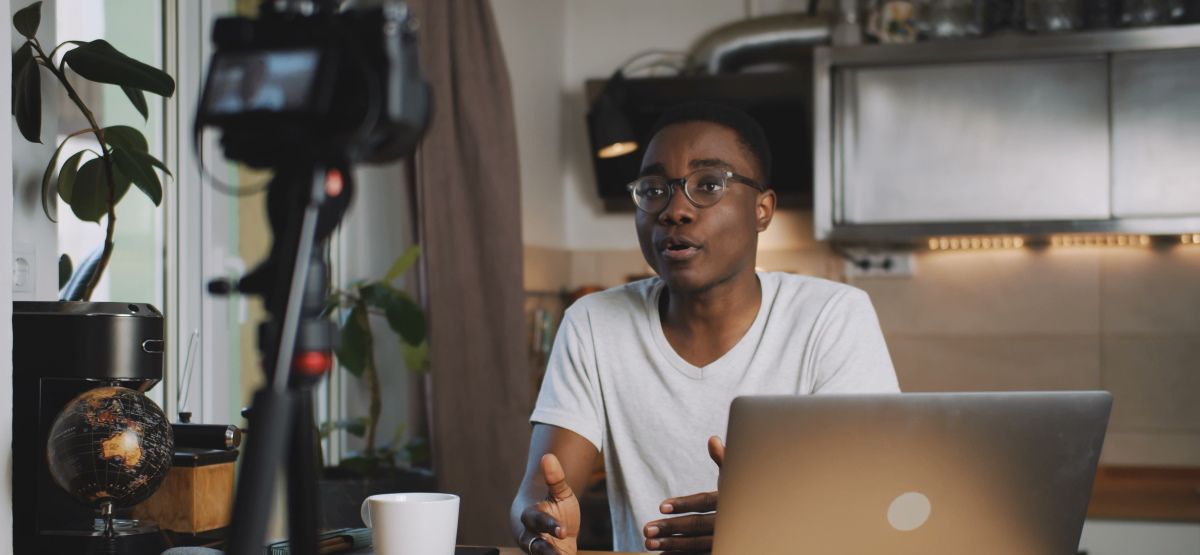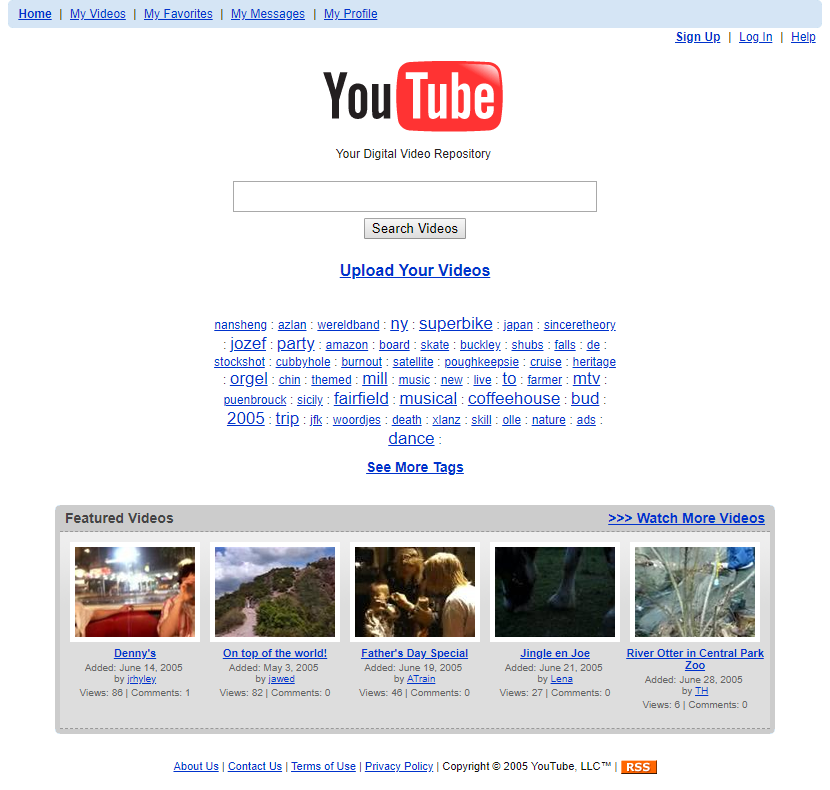20 years ago, a 19-second video in crisp 240p changed everything. You might not remember it, but a humble video simply titled “Me at the zoo” quietly marked the dawn of a new era. Oh, how far we’ve come since then.
A Brief History of YouTube
YouTube was officially founded on February 14th, 2005, by Steve Chen, Chad Hurley, and Jawed Karim. All three were former employees of PayPal. The original tagline for YouTube–”Tune In, Hook Up”– gives away the initial idea for the website: an online dating service.
February 2005 was also when Justin Timberlake and Janet Jackson performed at Super Bowl XXXVIII. After the halftime incident, the trio realized there wasn’t a good video-sharing platform online. So, they ditched the dating website idea and leaned on the excellent platform for video uploading they had created.
YouTube in 2005.
Around a year after the first video was uploaded to YouTube, the site had more than 25 million videos uploaded. It reached 100 million video views per day in the Summer of 2006. A few months later, Google purchased YouTube for $1.65 billion in stock–Google’s second-largest acquisition at the time.
Fast forward to today, and YouTube is the second most visited website in the world, only behind–you guessed it–Google.com. It has nearly three billion month active users who watch more than one billion hours of videos every day. To say the founders were right about the internet needing a good video-sharing platform would be a massive understatement.
YouTube Grows and Evolves
On the early internet, sharing personal videos was a clunky affair involving email attachments or obscure file-sharing sites. Then came YouTube, a simple platform where you could upload, watch, and share videos with unprecedented ease. That first video, uploaded on April 23, 2005, featuring YouTube founder Jawed Karim, wasn’t groundbreaking in its content, but it was revolutionary in its premise. It signaled the arrival of a digital town square for video.
Alright, so here we are, in front of the elephants. The cool thing about these guys is that they have really, really, really long trunks, and that’s cool. And that’s pretty much all there is to say.
The early days of YouTube were filled with similar videos. Webcam footage, low-resolution Family Guy clips, and sometimes questionable content. It felt like the Wild West of the internet, a chaotic but exciting space. You could stumble upon viral sensations like “Charlie Bit My Finger” and “Evolution of Dance,” clips that spread like wildfire on the budding platform. It wasn’t about production value or celebrity cameos. It was about raw, unfiltered moments connecting people across the globe.
For creators, YouTube offered an unprecedented opportunity. Suddenly, you didn’t need a television studio or a network contract to reach an audience. A webcam, some editing software (or even just a phone), and a compelling idea were all it took. This democratization of video content led to the rise of a new kind of star: YouTubers. People like Tyler Oakley, Jenna Marbles, and Grace Helbig built massive followings by simply sharing their personalities directly with viewers.
Of course, YouTube’s meteoric rise hasn’t been without its challenges. Issues like misinformation, copyright infringement, and the impact of constant online scrutiny and “burnout” have become significant concerns. YouTube has had to grapple with evolving regulations and the responsibility that comes with hosting billions of hours of content.
It All Started at the Zoo
Even with these complexities, it’s hard to overstate YouTube’s influence on our lives. It has shaped how we consume entertainment, information, and how we understand the world. From learning a new skill to following the latest news, from discovering independent artists to reliving memories, YouTube has become an integral part of the internet.
20 years later, it’s funny how the first video is an embodiment of the platform. At its core, YouTube has always been about regular people uploading videos. It’s easy to forget that simple videos like “Me at the zoo” far outnumber the viral hits and highly produced web series. You could also argue it was the very first “vlog” on YouTube, a category that would become massively popular.
So, as we mark the 20th anniversary of that simple video of a man enamored by elephants at the zoo, we should take a moment to appreciate how far things have come. Think about the countless hours you’ve spent watching, learning, and laughing at YouTube videos. Think about the creators you’ve discovered and the communities you’ve joined. YouTube’s story is still being written, but its first two decades have undeniably left a mark on society.

Related
What Is a Vlog, and Why Is Everyone on YouTube Vlogging?
Vlog. Vlogger. Vlogging. These are terms that have become common in our modern YouTube world. But what does it actually mean to be a “vlogger?” Where did the term “vlog” come from? Let’s do a deep dive into this phenomenon.




